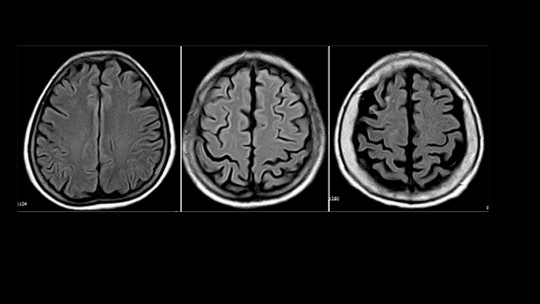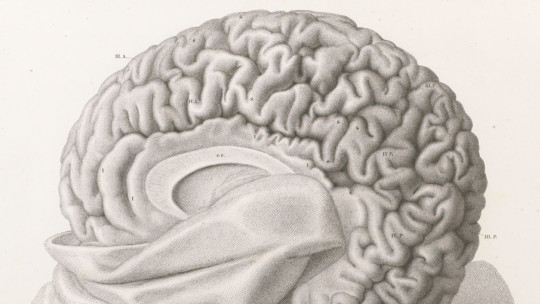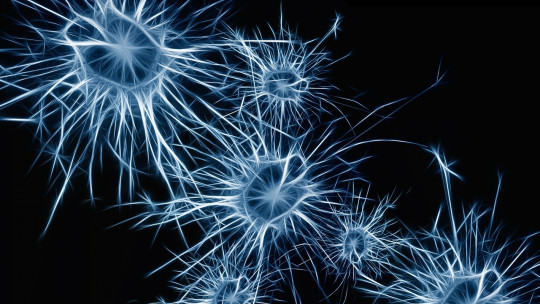
Scientific advances in the field of medicine have allowed throughout history that little by little we have been able to overcome and survive a large number of different types of diseases, improving the quality of life and increasing our life expectancy. .
However, there are still diseases, there are a large number of diseases and disorders that continue to pose a serious problem for our health and survival. Some of the great diseases to combat today are cancer, AIDS or the type of disorders to which this article is dedicated: the different types of dementia.
The concept of dementia
With the progressive increase in life expectancy and the decrease in the birth rate typical of our society, the average age of the population is gradually increasing. Thus, little by little, an increasing increase in the aging of the population is being seen, therefore some of the disorders linked to or aggravated by age. Among them are dementias.
Dementia is understood to be the type of neurodegenerative disorder of organic origin which is characterized by a progressive loss of one or more mental faculties, which usually includes memory along with other abilities, which interfere with the correct vital functioning of the person and cause discomfort and/or loss of autonomy. The deficiencies detected represent a worsening compared to the previous performance and do not occur only in a situation of altered consciousness.
It is about a type of chronic, progressive and irreversible disorder (although in some cases the degenerative process can be stopped and there may even be a complete or partial recovery, such as those caused by hydrocephalus, poisoning or infections), produced by alterations in the body linked to a disease, substance consumption or deterioration and/ or degenerations of habitual brain processes. Furthermore, their effects may vary depending on the types of memory they affect most.
Classes according to the location of the lesions
In dementia, the nervous system deteriorates little by little, deteriorating the different structures and nerve bundles and losing different functionalities over time as the disease progresses. However, the specific effects and deficits that each type of dementia will cause depend on the affected structures and the causes that cause said degeneration.
Based on the location of the damage, we can find different types of dementia..
1. Cortical dementias
Cortical dementias are those in which the main lesions can be located at the level of the cerebral cortex. Due to the involvement of this part of the brain in information processing and deep work at the level of information processing, this impairment produces the progressive loss of higher mental functions such as reasoning, or abstraction, as well as the association between stimuli and concepts or memory.
In this type of dementia An impairment of both anterograde and retrograde memory usually appears first. (in the latter case temporarily graded) followed by what is known as aphaso-apraxo-agnostic syndrome, in which problems appear in speech, sequencing of movements and recognition of stimuli.
Some of the best-known cortical dementias are Alzheimer’s in its initial stages, frontotemporal dementias, Pick’s disease or dementia with Lewy bodies.
2. Subcortical dementias
Subcortical dementias are those in which the involvement occurs especially in the subcortical structures, such as the basal ganglia, the thalamus or the brainstem. Some of the most recognizable symptoms are those linked to a high level of motor slowing, the presence of passivity, lack of motivation, withdrawal, apathy, emotional flattening and alterations of the frontal lobes that cause the loss of executive functions.
Although there is also usually memory loss, in subcortical dementia this is just as serious regardless of the moment in which you are asked to remember, generally having poor retrograde memory. Dementia derived from Parkinson’s, HIV and Huntington’s Korea are some of the best known.
3. Axial dementias
This type of dementia mainly affects the limbic system, its main symptoms being impairment of learning ability and working memory. Although it is not usually considered a dementia, Korsakoff syndrome is the best known case.
4. Global dementias
These are dementias in which characteristics associated with lesions appear in both cortical and subcortical areas. Although the lesions may originally be located in certain parts of the brain, in most dementias the degeneration of the nervous structures ends up affecting the entire brain over timelike Alzheimer’s.
Main types of dementia
Regardless of its neuroanatomical location, Some of the main types of dementia are the following.
1. Alzheimer’s disease
The best known and most common of dementias, Alzheimer’s disease, is a dementia of cortical origin. (although it ends up being cortico-subcortical) of insidious origin and slow progress that begins in the parieto-temporal area of the brain, with a progressive advance towards the frontal and the rest of the brain.
The cause of this disease is still unknown today, although it is observed in the brains of those who suffer from it. a high number of neurofibrillary tangles and beta-amyloid plaques.
There are usually three different phases. The first symptoms are usually the deterioration of recent memory, together with the presence of anterograde amnesia. A slight anomie and impoverished language appear. Other alterations also appear such as loss of olfactory capacity, loss of interest and motivation, rigid behavior and irritability. In this phase, there is often emotional suffering and even depression, since there is usually awareness of illness. Yet it is capable of being autonomous.
In a second phase, greater difficulties begin to appear since it is at this time that the aphaso-apraxo-agnosic syndrome usually appears. Cognitive abilities deteriorate greatly, resulting in retrograde amnesia and a high level of disorientation. In this state the individual is no longer capable of leading an autonomous life, requiring constant supervision.
In the last phase, the subject is already able to recognize neither significant people nor himself, losing language until reaching mutism and the basic skills of daily life. Over time He also loses motor skills, until he becomes permanently bedridden..
2. Frontotemporal
Frontotemporal dementias are a subgroup of dementias also called tauopathies (since alterations occur in the tau protein) that are characterized because the main involvement occurs in the frontal and temporal lobes, resulting in major alterations in personality and in the area of language.
There are three variants, the frontal one characterized by changes in personality and behavior, semantic dementia in which the loss of meaning of words stands out without changing other aspects of language, and primary progressive aphasia in which difficulties appear in all areas. of language.
3. Dementia with Lewy bodies
The most visible symptoms of this cortical dementia are serious problems with attention and executive functions, presenting aphaso-apraxo-agnosic syndrome, parkinsonian-type motor symptoms and hallucinations and delusions. Progressive onset and rapid course, It is very common for there to be intense psychotic symptoms and disorientationas well as sudden loss of consciousness.
Structures known as Lewy bodies usually appear in most of the cerebral cortex, along with a dopamine deficiency.
4. Due to prion disease or Creutzfeldt-Jakob disease
It is a dementia caused by the transmission of prions, proteins without nucleic acid that infect the nervous system. They cause sudden and rapid dementia, with motor problems such as tremors and spasms and abnormal functioning of neurons.
5. Due to Parkinson’s disease
Parkinson’s disease is a neurological disorder in which the subcortical structures, especially the basal ganglia and the substantia nigra (and especially the nigrostriatal pathway), progressively degenerate. In these areas, a high prevalence of Lewy bodies can be observed.
This degeneration is caused by a deficit in the functioning of dopamine, the most characteristic symptoms being the appearance of parkinsonian tremors that occur especially in a state of review. Likewise, difficulties appear in walking, motor slowdown, hunched posture, poor movement and facial inexpression.
The dementia associated with this disease, of a subcortical type, does not appear in all cases, although as the number of years increases since the onset of symptoms, its appearance is more likely. The typical symptoms of this dementia are slowing down both physically and mentally, along with high passivity.
6. By Huntington’s Korea
Huntington’s chorea is an autosomal dominant genetic disorder. of complete penetrance that especially virulently affects the neurons governed by the neurotransmitter GABA and acetylcholine of the basal ganglia.
With a slow and progressive onset, in this neurodegenerative disease, constant uncontrolled movements appear, in the form of twists and turns of the body parts that resemble a dance.
The dementia process, of a subcortical type, usually begins with behavioral and personality changes along with marked memory impairmentalso appearing over time an affectation in the frontal lobe that leads to a progressive loss of executive functions such as planning and sequencing.
7. Dementia due to HIV
HIV infection, after several years of evolution, can end up causing in some cases the degeneration of multiple brain structures and pathways, causing a specific type of dementia known as HIV-associated dementia complex.
This type of dementia, classified as subcortical, is characterized by the presence of slowing, reading problems, loss of spontaneity and hallucinations, decreased tracking movements and deterioration of movement in general. It usually progresses rapidly towards severe dementia leading to the death of the patient.
8. Vascular dementia or multi-infarct
This type of dementia is caused by the presence of cerebrovascular accidents, either in the form of hemorrhage or stroke, that affect one or more parts of the brain. The effects can vary enormously depending on the affected area, producing a deterioration in some functions such as memory or language.
It is a type of dementia that, unlike most, It begins suddenly and abruptly, with the patient generally noticing the change in state and physical or mental abilities.. It is common for the deterioration produced to occur in stages, with some periods of partial recovery also occurring.








